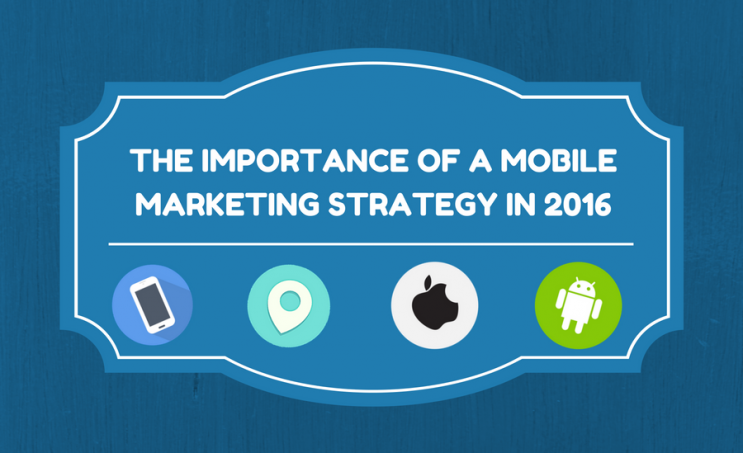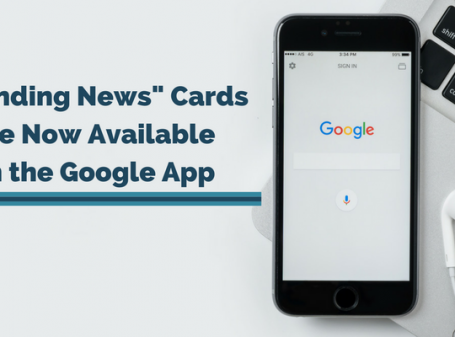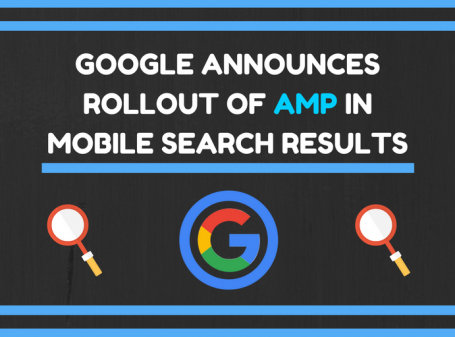The Importance of a Mobile Marketing Strategy in 2016
By: Rank Media

For those of you that follow my blog post and witty social media graphics (“witty” quite clearly being subjective), you’ll agree that I sound like a broken record when I state that businesses need to take marketing for mobile devices seriously.
“Come on, Jon. Tell us something we don’t know!”.
Ok. You know that mobile is important. I cannot stress it enough myself. Every digital marketing blog & their grandmothers will tell you that having an optimized presence on mobile devices is extremely important, especially now that it’s 2016 where more users are using search engines via mobile devices rather than desktops. Sounds pretty evident that most businesses have adopted a mobile-centric or mobile-first mentality, right?
Wrong.

Unfortunately, yours truly comes across a number of sites and emails on a daily basis that completely miss the mark when it comes to being optimized for mobile. Luckily, times are changing and companies around the world are beginning to wake up and realize the potential of having their conversion funnels optimized for users on the go. What’s even better is that digital advertising platforms such as Google, Facebook, Instagram, and Snapchat are making it easier and easier to reach lucrative niches, which should be incentive enough to adopt a mobile marketing strategy. Now, let’s revisit why mobile is important and the pitfalls of being myopic when it comes to website design.
Mobilegeddon & Other Initiatives from Google
Google has turned the world of search upside-down over the past year and a half. Below is a quick summary of initiatives Google has launched to push webmasters and businesses alike towards a mobile-first mentality:
Mobilegeddon: The Mobile Algorithm Update
In April 2015, Google launched the long awaited mobile algorithm update aptly titled “Mobilegeddon” within the search community.

While not as disastrous as the film Armageddon (sorry Ben Affleck), this mobile update focused on rewarding websites that were optimized for all types of devices, passing the mark on a wide range of mobile usability factors. On the flip side, websites failing Google’s mobile-friendly tests were finally going to see their rankings decrease and traffic from organic search shrink. Of course, the final outcome was not as cataclysmic as some webmasters predicted; however, there was a relatively seismic shift with regards to organic traffic and rankings between sites that were optimized for mobile devices and those that were not. After some webmasters initially stated that the update wasn’t a big deal at all, the statistics unequivocally revealed the opposite:
- Non-mobile friendly pages saw a decrease in traffic compared to 19.5% that saw an increase. (Wall Street Journal)
- 30.1% of web pages that were mobile friendly saw an increase in traffic compared to 25.4% that saw a decrease. (Wall Street Journal)
- Sites such as Reddit.com, NBCSports.com, and SongLyrics.com saw a drop in mobile visibility ranging from 26-28% – you can see the full list here courtesy of SearchMetrics.
If that wasn’t incentive enough for website owners to implement an optimized design for mobile devices, Google then launched part two of the algorithm update in May 2016. This was most likely another attempt from the search engine giant to drive the point home that from this point forward, if you’re not thinking about mobile marketing when it comes to search engine optimization, then you might as well forget about capturing any visibility for your main keywords on mobile devices.
Major Changes to the Google AdWords Environment
Probably the most significant update of 2016 in the search marketing world – both organic & paid – was the removal of right-hand side ads from search engine results pages. This update was pushed live by Google for a number of reasons, one of which was to make the search experience for users on mobile, tablet, and desktop devices consistent . The removal of right-hand side ads resulted in a reduction of the number of spots available for advertisers above the fold on computers. While this didn’t affect the way ads are exhibited on mobile devices, it was a precursor to a number of major Google AdWords updates brought forth by the search engine giant to evangelize advertisers to take a holistic approach to marketing for all devices. These updates were:
- Expanded Text Ads (ETA): the 25-35-35 character format for ads was replaced with two 30-character headlines and one 80 character description. This update, which is rolling out now and is live across all AdWords accounts, is the biggest change to the paid search platform in years and gives advertisers an opportunity to give users more information before clicking through to the landing page.
- Device Bid Adjustments: Google separated computers & tablets within the device bidding platform and gave advertisers more flexibility with regards to bidding adjustments for all three device types.
- Responsive Ads for Google Display Network: a new format for display advertising campaigns, the responsive units allow advertisers to input 25-character and 90-character headlines, a 90-character description, an image, and a URL, after which Google will automatically adjust for millions of apps and websites across the Google Display Network.
- Local Search Ads: local businesses will now have the opportunity to promote locations within Google Maps. Promoted locations will have a purple location marker, making it stand out from the crowd when it comes to local searches. The new ads will be displayed within the Google Maps app, the web, and Google’s Expanded Maps results.
All of these updates reinforce the notion that there is immense potential in marketing to audiences on mobile devices.
Designing with Mobile on the Mind
A common mistake made by a lot of businesses during the development stage of a new website is designing the desktop/native version without thinking about how users will interact with the new website on smartphones and tablets. The days of being desktop-centric are long gone, especially when you only have a couple of seconds to capture the attention and interest of inbound traffic. If your website is not up to snuff, you risk the chance of losing potential customers and seeing your bounce rates increase in Google Analytics. Unlike a bouncy castle, it’s not fun to see high bounces in your reports, which will ultimately lead to fewer conversions.
As a result of recent trends, the process for designing websites has been revolutionized compared to early days of the Internet. Designers now need to focus on what content is most important, which features can increase the user experience, and how to adapt “money” pages for all devices. By adopting a mobile-first mentality, or at the very least, a device-holistic approach, website designers and coders will pinpoint the essential features on a small screen and scale the mobile design upwards for desktop, rather than designing for desktop first and scaling downwards for mobile. The issue with the latter method is that you might end up eliminating integral features and/or content to ensure that your website is mobile-friendly in the end. By designing for smaller screens first, you are essentially creating a concise version of your website where you can focus on optimizing your conversion funnels, creating kickass ad copy, and making your unique selling proposition stand out easily.

Don’t Forget Those Pesky Tablets
While smartphone screens have increased significantly over the past couple of years, people have forgotten about the prominence of tablet devices in recent years. While larger smartphones have been well received by people around the world, tablets still remain an essential device when it comes to optimizing campaigns for mobile marketing, as shown by a sample of statistics below:
- Apple shipped an estimated 50 million iPads in 2015, with the closest competitor being Samsung at 24 million. Their market shares in the global tablet market stand at 25% and 15% respectively. (Statista)
- An estimated 39.6 million tablets are shipped globally each quarter. (Statista)
- 20% of the U.S. population owns a tablet. (Statista)
Based on the facts above, it’s evident that tablet usage, while paling in comparison to desktops and smartphones, is significant enough to be considered in your overall mobile marketing strategy. A common mistake many businesses make is failing to optimize and test websites on tablet devices, which leaves them with a trainwreck of a site on a number of tablets.
Mobile Marketing is Important…what now?
If your website still isn’t optimized for mobile devices, the first thing you should do after reading this post is to consider why it has taken this long to adjust your web property for the new era of digital marketing. Whether it’s with your internal marketing team or an agency (*cough* we’re experts on mobile design – check out some of our work here *cough*), you should analyze your current website analytics and pinpoint where most of your traffic comes from. You might be surprised to see that your conversion rates are failing on mobile and tablet devices compared to desktops. Additionally, put yourself in the shoes of your target audience and try to understand how they access information and search for products/services online. If they are predominantly using smartphones and tablets, then it’s pretty obvious that implementing a mobile-friendly design should have been on the top of your company’s agenda months ago. Of course, it’s never too late to start embracing mobile, especially if you’re just getting started online and thinking about investing a part of your marketing budget into media buying on Google & social media platforms.
Now, imagine if your website was optimized for mobile traffic and adjust those conversion rates to be similar to your desktop conversion rates…if increasing overall conversions and making more money online isn’t incentive enough to embrace mobile, then I don’t know what is.








 (800) 915 7990
(800) 915 7990
